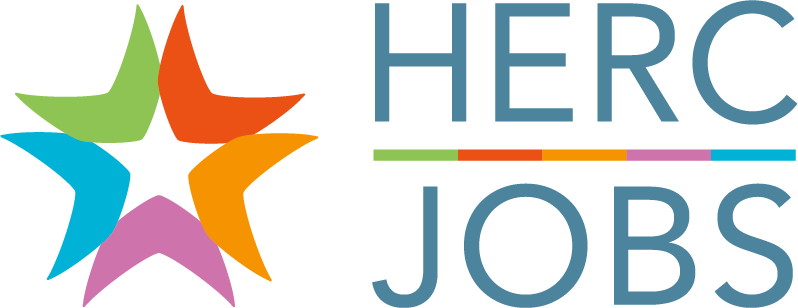
Setting actionable goals for the higher ed workplace can be a daunting task. One of our objectives in the past year was to better utilize LinkedIn polls to learn from job seekers and share our findings with HERC members.
In case you didn’t know, the Higher Education Recruitment Consortium (HERC) is a non-profit coalition of over 700 colleges, universities, hospitals, research labs, government agencies, and related non- and for-profit organizations, committed to advancing diversity, equity, and inclusion in the higher education workforce.
With over 20,000 followers, LinkedIn is our largest social media channel to reach our community of job seekers and higher ed professionals. If you participated in any of our polls, we are truly grateful for your input!
Below are some highlighted poll results and actions that we encouraged our members to take in their recruitment and retention efforts:
1. Offer work-from-home and/or flexible schedules
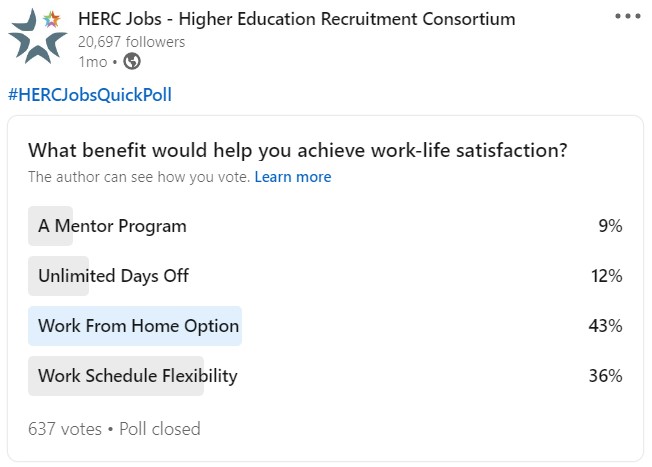
In the past few years, many offices have seen how work can be taken home and managed successfully. HERC’s LinkedIn poll takers reported that working from home and a flexible schedule are two leading factors in achieving work-life satisfaction. While both may not be options depending on the position, offering either when possible can be a factor in retaining employees who are mostly satisfied with their workplace.
2. Promote interdepartmental hiring
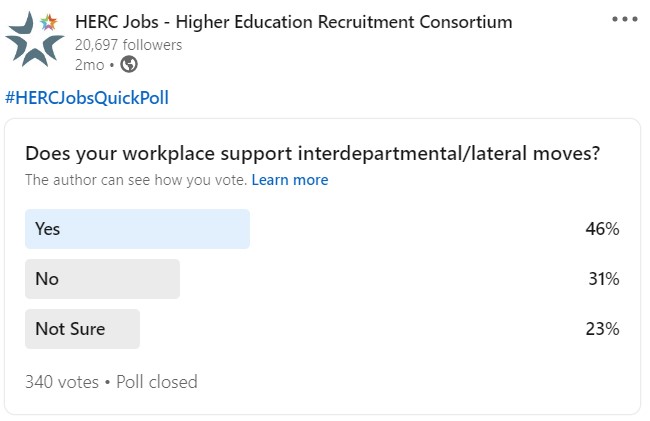
A strong number of those polled (54%) said that their workplace either does not support interdepartmental moves, or they are unsure if it is supported. This movement within an organization can offer several benefits to an institution, including talent retention and less onboarding and training time. If an institution already supports this, communicating it to current employees can be an easy way to find candidates.
3. Create a clear understanding of open positions
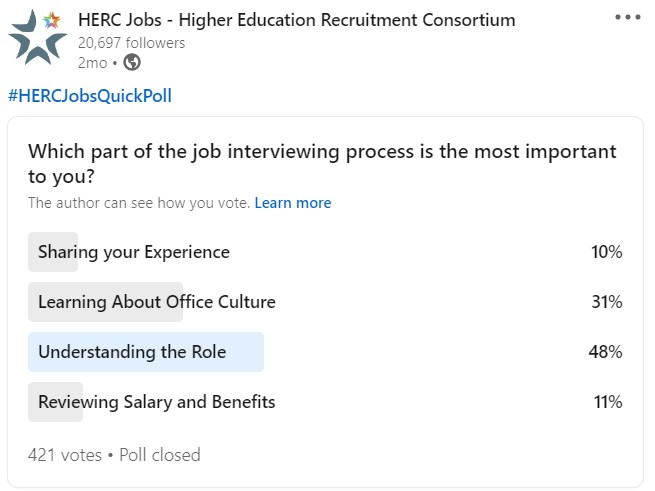
Surprisingly, for poll respondents, reviewing salary and benefits was not the most important topic to discuss during job interviews. Understanding the role (48%) and learning about office culture (31%) were the priority topics that candidates wanted to address during a job interview. Job seekers want a clear understanding of what the role will entail as well as what type of workplace culture this role will be performing in. Taking steps to alleviate any confusion about the role or workplace can lead to a better candidate pool.
4. Build a healthy workplace
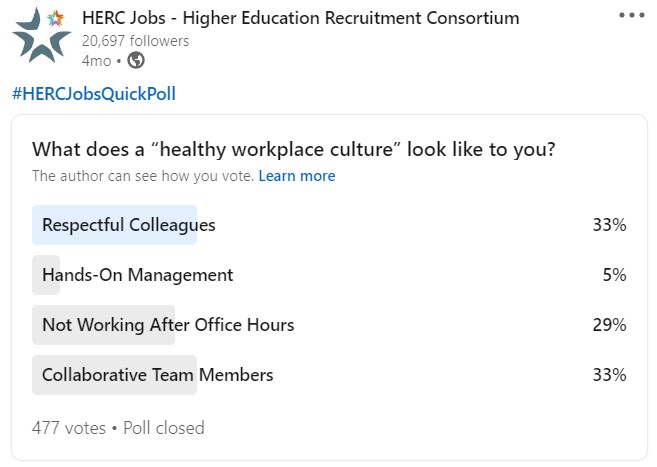
Having respectful colleagues and collaborative team members were both polled as the highest factors in determining a healthy workplace. Building strong teams and respectful work environments can be some of the most challenging tasks for a human resources department, however dedicating resources to this can easily lead to less turnover.
5. Provide salary transparency
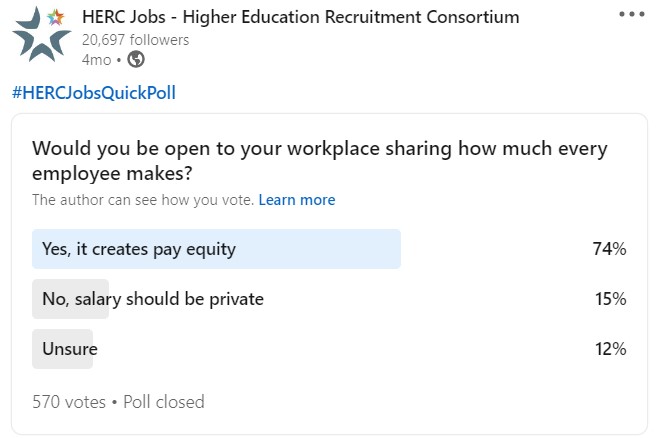
Salary transparency was favorably ranked in HERC’s LinkedIn poll. 74% of users responded, ‘yes, it creates pay equity’ when asked about comfort level with salary transparency in the workplace. In addition to pay equity, it can build a sense of trust between employees and the institution. If an institution is willing, having an open salary workplace can provide a positive benefit to employees. A great way to start engaging job candidates is by including a salary range in job postings.
Check out more Top Articles on HERC Jobs.
About the Author: Connie Castellucci is a higher ed data analyst consultant. Previously she has worked within higher ed departments and nonprofit organizations addressing recruitment, new school development, and member recruitment needs.
